I was sad to see that after the demise of the long-running Home Education Magazine, the publisher chose to take down the entire site, and with it the archive of years of articles that they published. I wrote for HEM for only the last two years, but I loved being able to contribute to an important voice in homeschooling. Since these articles are no longer available online, I am re-publishing mine here on my blog.
In the time that I’ve been homeschooling, major progress has been made by scientists studying how we think and learn. What we thought we knew about learning ten, twenty, or thirty years ago is being turned on its head in study after study showing how our brains actually do tasks.
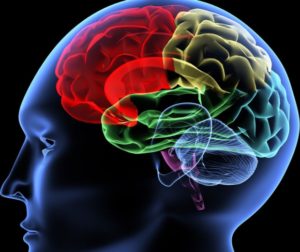
Mainstream American education has hardly reacted to the new data that is coming out daily, still attempting to force children to learn in a way that never really suited anyone, though we all suffered through it. But that’s no reason why we homeschoolers can’t look at the research and take stock of how they work with our own children.
Your physical brain
Modern imaging technology has encouraged an explosion in brain research. We used to have to figure out how the brain worked by observing people, recording their actions, and dissecting the brains of the deceased. Modern imaging allows scientists to watch brains learning, growing, and changing in real time, and much of what they have learned shows that educational theory lingers in the dark ages.
We used to think that the brain had relatively isolated areas for different functions; now we see that although language is centered in one part of the brain and movement in another, those two parts of the brain are interconnected and “help” each other learn.
We used to think that creative people were “right-brained” and technical people were “left-brained.” Imaging shows us that although certain processes make take place more on one side of the brain than the other, complex processes take place throughout the brain. Scans of people in high creative mode—from painting to designing technology—show their brains lighting up in concentrated areas on both sides, not simply glowing on the right side as previously predicted.
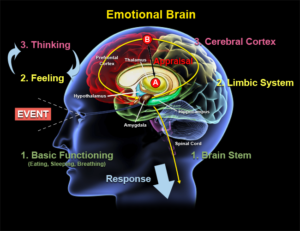
Educators base teaching theory on the idea that people have different “learning styles” in which they can be categorized as a single type of learner, such as “kinesthetic.” Modern brain research shows us that we all learn through all available senses, and hasn’t been able to validate the learning styles theory at all. In fact, evidence indicates that providing a rich, multi-sensory environment is the best way to go.
We used to believe that teenagers were largely “grown up” both physically and mentally. Brain imaging shows us that in some important ways teens’ brains aren’t “grown up” at all. The last part of the human brain to become fully functional is the prefrontal cortex, where the “executive function” resides. The executive function is what filters input and makes decisions, and isn’t fully developed in most people until the age of twenty-five.
So what does this tell us as homeschoolers? First of all, our goal should never to be to “teach” our children one subject in one way, the way that public school does. Our children are learning and making connections all the time, whether they are doing a math worksheet, playing Minecraft with their friends, or working in the garden. The skills that a child uses to do math, play Minecraft, and garden are not isolated; they overlap in complex ways.
Secondly, we now know that brains that have learned how to do one thing well are better prepared to learn anything else. This deep learning is more important than the topic being learned. As long as our kids are making connections and growing new pathways in their brains, they are creating the structures that will allow them to build on what they’ve learned.
Lastly, we know that just like with athletic ability, the important thing is that children are using and exercising their brains. This is important in different ways at different ages:
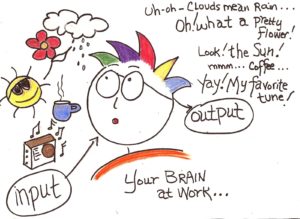 Babies and toddlers need tactile experiences. The more babies interact with the physical world and with other humans, the more they learn.
Babies and toddlers need tactile experiences. The more babies interact with the physical world and with other humans, the more they learn.- Younger children need to be allowed to explore. Trapping them in the same room every day and restricting them to the same curriculum doesn’t take advantage of their natural inclination to learn through experimentation and exploration.
- Research shows that during the early teen years, ages 10 to 13, a large amount of “pruning” happens—brain connections that are not being used are discarded. So the early teens, contrary to common belief, are not just a time of social growth. These children need to be inspired to use their brains optimally at this important time.
- Our teens need meaningful work, and at the same time, they need a lot more support than our culture is inclined to give them. Homeschoolers are lucky in that we can foster strong mentoring relationships with our teens. At this time in their lives, teens need to be allowed to “steer the boat,” while knowing that we are there to back them up if their still-forming executive function is not up to the task.
Physical brain resources:
- Core Concepts from BrainFacts.org: http://brainfacts.org/about-neuroscience/core-concepts
- Your Brain Map is a cool interactive learning tool: http://www.opencolleges.edu.au/informed/learning-strategies/
- Center on the Developing Child: http://developingchild.harvard.edu/
- “The Real Neuroscience of Creativity” explains the right/left brain controversy: http://blogs.scientificamerican.com/beautiful-minds/2013/08/19/the-real-neuroscience-of-creativity/
Your learning brain is not static
The old model of the human brain told us that people were born with a certain amount of ability, and then as older adults we started to lose that ability. The idea of IQ, that there is a number that can sum up what a brain is capable of, was largely embraced and promoted.
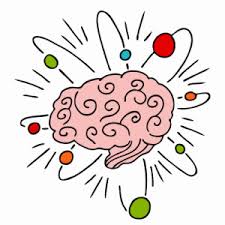
Recent research has turned this old belief on its head; there seems to be very little correlation between the basic building blocks that a person is born with and his or her eventual success in career and life. Research shows that as long as you are “smart enough” to tackle the job you love, what counts are some other factors.
One of those factors is called neuroplasticity. We always knew that children’s brains grew, both physically and in ability. But it turns out that even though brain development does slow down in adults, it doesn’t ever stop. If learning is all about making connections and then building on those connections, neuroplasticity is all about keeping those connections alive and active. The more we work on learning, the more flexible and agile our brains remain, and what we work at learning matters.
“Anything we repeat enough reinforces itself by creating brain connections to support that specific behavior,” writes Dr. Mark Bertin. “Routines built early in childhood neurologically sustain themselves around nutrition, exercise, reading, technology and countless other aspects of life.”
Many parents note that although their children learned quickly and easily before puberty, suddenly their teens find learning “a drag” and seem more intent on social relationships than academics. Part of the problem is due to the fact that our traditional educational approach pretty much shuts off creativity and exploration in the early teens. We don’t expect that our young children will want to learn by sitting quietly, listening, and then regurgitating, but suddenly we do expect this of our teens.
Brain research has shown that as teens’ academic explorations drop off, their neural connection-building also drops, with very real effects on their future achievements. The main thing to keep in mind when your teen wants to retreat from learning is that “use it or lose it” really is true of the brain. Research is showing that using the brain and continuing to grow new neural pathways guards against mental decline later in life.
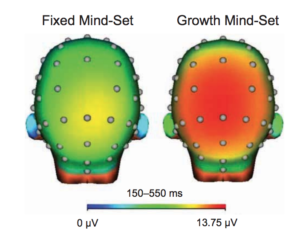
Another important factor about your child’s learning is what psychologist Carol Dweck has dubbed “mindset.” In her research, she demonstrates that people with a “growth mindset”—people who believe that they can do something if they work hard enough at it—achieve more than people with a “fixed mindset”—people who believe that they have a set intelligence and ability level.
In your homeschool, keep in mind that constantly praising your children can be detrimental to their learning. “You’re a great artist,” may seem like the nicer thing to say, but “you worked really hard on that painting” will be better for your child’s self-esteem and willingness to tackle more complex projects.
Finally, research into stress and learning has resulted in fascinating new ideas that go against both the achievement-oriented prep school model and the happiness-oriented free school model. It turns out that, as you probably know, stress is bad for your kids. When children’s brains are stressed, their brains go into “flight or flight mode.” Instead of processing the incoming information in their prefrontal cortex, it is sent directly to their reactive “lizard brain,” where it is often lost. That’s why when your child cried while doing fractions yesterday, you find out that today she’s back to where she started, remembering little or nothing she worked on the day before.
On the other hand, the stress-free life turns out also to be detrimental to your child’s eventual academic and career success. It turns out that there is a zone of “optimal stress,” where a student is challenged to stretch beyond his comfort zone into an area where he has the skills to succeed but is not as confident. We see this on the playground all the time: a child resists trying the monkey bars when they are simply unattainable, but one day after seeing a friend do them, she is willing to undergo some “good stress” in order to achieve a new skill.
Learning resources:
- “Losing is Good for You” shows how mindset can be changed through overly generous reward systems: http://tinyurl.com/kayszup
- “The Brain-Boosting Product You Already Have in your Home” offers some good, practical advice based on neuroplasticity research: http://tinyurl.com/meyuzv4
- Carol Dweck’s Mindset website: http://www.mindsetonline.com/
How you live affects your brain
The old view of brain development and learning saw it as separate from the development of the physical body, but modern research proves that nothing could be further from the truth. Physical health and lifestyle play a huge role in everyone’s brain health, but especially in the development of children’s brains.

Research shows that children who get ample exercise and time in nature are calmer, more creative, better students, and eventually better at pursuing their goals. Every homeschool (and school, for that matter) should prioritize non-academic activities that support academics. Our kids may think that they are happier playing video games inside, but their bodies need aerobic exercise and nature in order to work at their optimal level.
That’s not to say that video games are all bad. In fact, research is showing that the “gamification” of education can help kids learn. We homeschoolers already knew that kids can learn more about adding and subtracting while playing Monopoly than by doing worksheets, and that’s true of a lot of learning. Video games that offer deep learning opportunities (which doesn’t—sorry, kids—include shooting at birds flying across your screen) can enhance children’s education, when not done to an extreme. Similarly, video games that develop strategy skills and reflexes (yay, now we can shoot birds!) have also been shown to improve academic ability….when not done to the exclusion of other healthy activities.
There is one area where computers are causing learning problems, which homeschoolers should notice because it’s become so prevalent: multitasking. Although modern humans take great pride in their multitasking skills, and modern life requires more and more of it, it turns out that multitasking is detrimental to learning. When deep learning is the goal, distractions need to be kept to a minimum. So although your child says that she can play a game on her iPod while listening to the audiobook, research quite conclusively proves that she’s only listening with half of her brain, and much of what she thinks she’s taking in will get discarded.
Brain tasks resources:
- “The Multitasking Mind” shows how we really do split our brain in half when paying attention to two different tasks: http://www.brainfacts.org/sensing-thinking-behaving/awareness-and-attention/articles/2013/the-multitasking-mind/
- The Eide Neurolearning Blog has great articles about current research: http://eideneurolearningblog.blogspot.com/
Your brain is what you make of it
Finally, modern brain research is clearly leading us away from old-fashioned ideas of predestination and fate. Human brains are highly malleable and highly individualized. Children who are “bad at math” grow up to become mathematicians. Children who are fascinated with science at the age of six end up as professional artists. And adults who have embarked on one career find success and fulfillment by changing to another mid-stream.
You may be distressed that, for example, your adopted child didn’t get the optimal upbringing for the first two years. Of course, we want all children to get as many opportunities as possible, but your adopted child now has the rest of his life to become the person that he wants to be, regardless of what he missed at first.
You may worry that your autistic or dyslexic child will not have the opportunities you hope she will have. But research is uncovering more and more ways in which “different brains” can even be optimal in some situations. Author Jonathan Mooney speaks about growing up “learning disabled” and then realizing that as an adult, he could offer his “neurodiversity” as an asset. (Check out his Youtube videos to hear his poignant and very amusing story.)
Or you may have a neurologically typical child who doesn’t excel in any area and you worry that he won’t find a calling at all. Research shows that there is no sense in assuming that every child will develop at the same rate. Hopefully, with the gift of time, creative exploration, and a rich environment, your child will find his calling.
The most important thing to understand about educating any child is that your child can’t help but learn. You are there as a coach, guide, mentor, and cheerleader (as long as you don’t say “good job” too often), and it’s up to your child to do the rest.
Brain-building resources:
- Neuroscience for Kids is a great website and email newsletter for kids: http://faculty.washington.edu/chudler/neurok.html
- The jury is out whether brain-building games actually have a longterm effect, but they can be fun. Search for free “n-back” apps and others like these from the BBC: http://www.bbc.co.uk/labuk/results/braintestbritain/4_brain_training_games.html
As homeschoolers, we take on a huge burden: we determine the environment in which our children’s brains develop. The nice thing about modern brain research is that it validates many practices that homeschoolers have been preaching for years: Allow children to develop at their own rate, give them ownership in the learning process, don’t worry about natural variations between different children’s skills, and keep them stimulated and inspired with a rich, varied learning environment.
For once we get to say, “I told you so!”